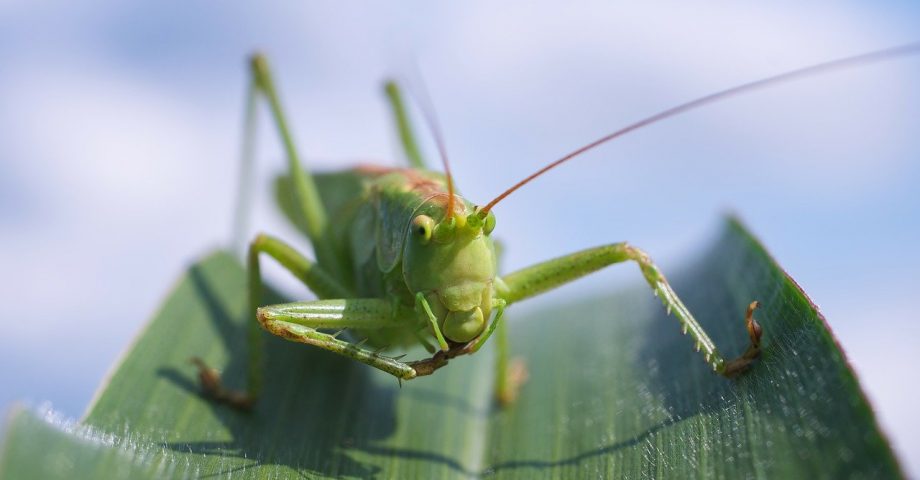27 Great Facts about Grasshoppers
The grasshopper is a really curious beast. It’s pretty easy to assume that they all look the same, and that they all do the same thing! However, did you know that there are actually thousands of grasshopper species? Did you also know that they can live all over the world, and are seen as major pests for crop growers? They can even live out in jungles, too!
If you’re fascinated by all kinds of bugs and creepy crawlies, then you’re going to want to know more about the grasshopper. Let’s take a look at these fun facts about grasshoppers!
1. There’s definitely more than one type of grasshopper.
There are actually more than 11,000 different grasshopper species from all over the world!
2. They belong to a big order.
They are part of the Orthoptera order. As you can imagine, there are many, many more critters and creatures which fall into this order!
3. Not all grasshoppers are locusts.
Locusts are commonly confused with other critters, but they are actually types of grasshopper all on their own.
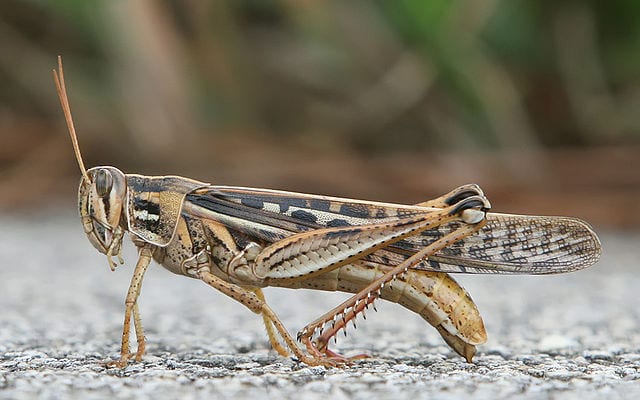
4. They are voracious feeders.
It’s thought that the grasshopper is able to eat up to half their body weight each day.
5. Some grasshoppers are massive!
They can grow to up to five centimeters or two inches in length. However, there are some bigger varieties which can grow up to 12.7cm, or five inches in length!
6. They can stay well hidden.
Grasshoppers are not always easy to spot – they tend to have a fantastic camouflaging system.
7. They’re on the end of a long food chain.
Grasshoppers make up many diets across the world. Not only are they prey for many predators in the wild, but many people also eat them, too! They are thought to be full of protein.
8. Hop by name, hop by nature.
The grasshopper has the ability to jump incredible distances. In general, you can expect them to jump up to 1.25m when they need to! If humans had the same jumping ability, this would mean that we could cover one end of a football stadium to the other in one leap!
9. They have musical legs.
Grasshoppers are famous for the noises they make. They create their distinct calls and noises by rubbing their legs together. Sometimes they can even snap them to make a noise, but it doesn’t hurt – as far as we know.
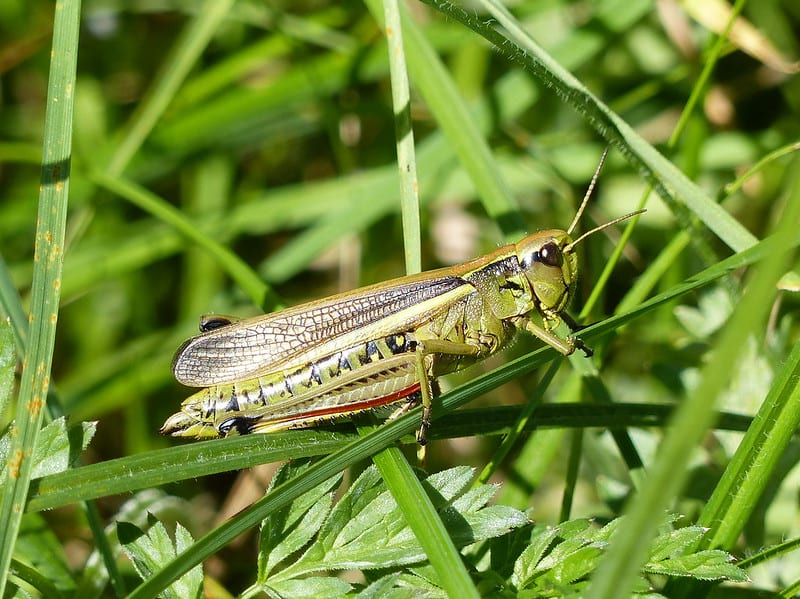
10. Their physiology doesn’t vary much.
Grasshoppers generally have six legs and two antennae across all species.
11. Grasshoppers’ legs are bigger at the back.
They have longer back legs than front legs. They bend at the knees and can spring forward by slackening their muscles to create less resistance. This is what helps to catapult them and to help them jump such long distances.
12. Grasshoppers even have the means to flutter.
Grasshoppers do also have wings. However, these are a little flimsy – though if you look closely, they are almost rainbow colored!

13. Grasshoppers help us break it all down.
Grasshoppers are hugely important for the environment and global ecosystem. They help to dissipate decomposing matter.
14. They are amazingly adaptable!
Grasshoppers can live all over the world in various environments. You may find them in forests, marshland and even the odd jungle!
However, the life of a grasshopper is fairly short. They can live for up to one year.
15. They love swarming.
Grasshoppers grow from nymphs into adults and hatch from eggs. They can swarm together as soon as they are at the nymph stage of development.
16. Grasshoppers tend to propagate at summer’s end.
Grasshoppers tend to mate towards the end of the summer season. This is when males are most likely to fertilize eggs, which have been left by females as the weather starts to get warmer.
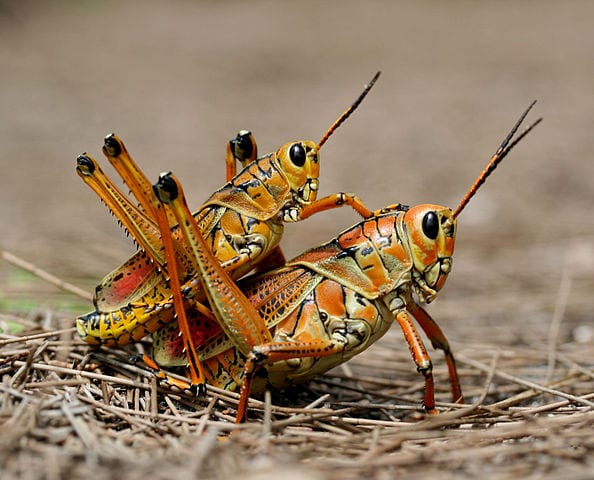
17. Eggs pile up.
It’s normally pretty easy for males to find eggs, as they are usually stacked in piles or batches.
18. Grasshopper eggs can last through a lot.
Believe it or not, grasshopper eggs are usually pretty resilient against wet weather. Rain doesn’t harm them.
19. They’ll withstand weather after they’re born, too.
Grasshoppers in general are pretty hardy when the weather turns bad. They are known to be able to survive for days on end without any kind of food if, for example, the rain starts beating down.

20. Keeping your ear to the ground.
Grasshoppers have an interesting way of hearing. They don’t have ears, but instead have auditory parts built into their abdomens!
21. Grasshopper noises will vary.
It’s a common misconception that all grasshoppers make the same noises. This can vary from species to species.
Grasshoppers can also make different sounds for different purposes. For example, they can find suitable mates with different types of sound, or click, or drumming.
22. Yes – grasshoppers can fly!
Despite their fairly flimsy wings, grasshoppers are able to fly. They can do so for short distances, but thanks to their fantastic leg power, they may choose to spring around instead!

23. They tend to plan ahead.
Grasshoppers have a good sense for whether or not it is worth flying or hopping in certain weathers, temperatures, and circumstances. Therefore, the transport they choose may vary from time to time!
24. They work to a rhythm!
Grasshoppers have the ability to drum out sounds on their back legs, too. Not all grasshoppers have rear leg notches, but those that do really work hard to tap out rhythms.
25. They’ll put up a fight.
Grasshoppers can and will defend themselves if they feel threatened. It might not seem like much, but they can spit if they feel you are threatening them.
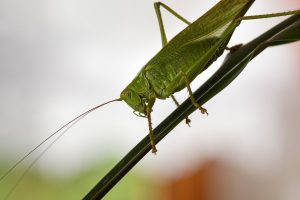
26. Gross but true!
The grasshopper’s spit has been likened to tobacco spitting. This is because it is generally brown in color, and as some grasshoppers live amongst tobacco, the connection is clear!
However, don’t worry – a grasshopper’s spit doesn’t actually contain tobacco – meaning that you’re safe from nicotine spray if you go anywhere near one!
27. Grasshoppers have the power to deplete all kinds of crops.
Grasshoppers, when left to their own devices, can really devastate, and clear out land and vegetation. This is why there are so many different attempts to try and curb their populations.
In one instance, grasshoppers reportedly cleared vegetation across a 75 square mile patch of land in Kenya, back in 1954! This removed plenty of crops which would otherwise have been sold on for food.
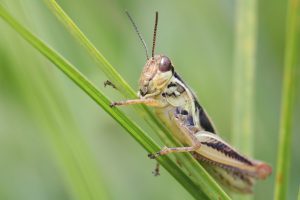
FAQs about Grasshoppers
Can grasshoppers be harmful?
There is very little evidence to suggest that grasshoppers and locusts can harm people, however, they can devastate crops.
Do grasshoppers carry disease?
There are studies that suggest grasshoppers may carry disease that can pass to cattle and other livestock.
Is eating grasshopper wise?
Many people eat grasshoppers - they are actually thought to be high in protein and vitamin C.
Do you know any fun facts about grasshoppers? Share them in the comments below!
Are you fascinated with learning all about insects? Check out these amazing facts about ants…
This page was last modified on August 3, 2023. Suggest an edit
